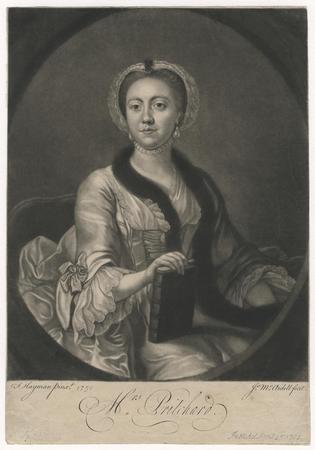Related Research Articles

David Garrick was an English actor, playwright, theatre manager and producer who influenced nearly all aspects of European theatrical practice throughout the 18th century, and was a pupil and friend of Samuel Johnson. He appeared in several amateur theatricals, and with his appearance in the title role of Shakespeare's Richard III, audiences and managers began to take notice.
This article contains information about the literary events and publications of 1775.
This article contains information about the literary events and publications of 1715.
This article contains information about the literary events and publications of 1726.
This article contains information about the literary events and publications of 1733.
This article contains information about the literary events and publications of 1735.
This article contains information about the literary events and publications of 1740.
This article contains information about the literary events and publications of 1743.
This article contains information about the literary events and publications of 1745.
This article contains information about the literary events and publications of 1747.
This article contains information about the literary events and publications of 1748.
This article contains information about the literary events and publications of 1750.
This article contains information about the literary events and publications of 1756.

Hannah Pritchard was an English actress who regularly played opposite David Garrick. She performed many significant Shakespearean roles and created on stage many important female roles by contemporary playwrights.

Bardolatry is excessive admiration of William Shakespeare. Shakespeare has been known as "the Bard" since the eighteenth century. One who idolizes Shakespeare is known as a bardolator. The term bardolatry, derived from Shakespeare's sobriquet "the Bard of Avon" and the Greek word latria "worship", was coined by George Bernard Shaw in the preface to his collection Three Plays for Puritans published in 1901. Shaw professed to dislike Shakespeare as a thinker and philosopher because Shaw believed that Shakespeare did not engage with social problems as Shaw did in his own plays. Shaw argued that the new naturalism of Henrik Ibsen's plays had made Shakespeare obsolete.
Events from the year 1741 in Great Britain.

John Henderson (1747–1785) was an English actor who played many Shakespearean and other roles. He first acted in Bath, where he was known as "The Bath Roscius", and then in London. Had he not died young he would have been remembered as a worthy successor to David Garrick.

Henry Leigh Murray (1820–1870) was an English actor.

Jane Powell or Mrs Powell was a British actress. She was also known as Mrs Renaud and Mrs Farmer.
The Shakespeare Ladies Club refers to a group of upper class and aristocratic women who petitioned the London theatres to produce William Shakespeare's plays during the 1730s. In the 1700s they were referred to as "the Ladies of the Shakespear’s Club," or even more simply as "Ladies of Quality," or "the Ladies." Known members of the Shakespeare Ladies Club include Susanna Ashley-Cooper, Elizabeth Boyd, and Mary Cowper. The Shakespeare Ladies Club was responsible for getting the highest percentage of Shakespeare plays produced in London during a single season in the eighteenth century; as a result they were celebrated by their contemporaries as being responsible for making Shakespeare popular again.
References
- 1 2 Ritchie, Fiona (2006). "Shakespeare and the Eighteenth-Century Actress". Borrowers and Lenders. 2 (2). Retrieved 2023-12-29.
- ↑ "History". Westminster Abbey. Retrieved 2013-11-29.
- ↑ "First Magazine Published in America". West Hempstead Public Library. Archived from the original on 2013-04-16. Retrieved 2012-07-22.
- ↑ Brown, John Russell (1993). Shakespeare's Plays in Performance. Hal Leonard Corporation. p. 63.
- ↑ Simpson, Louis (1993-04-04). "There, They Could Say, Is the Jew". The New York Times . Retrieved 2013-09-04.
- ↑ Horace Walpole remarked, "There was a dozen dukes a night at Goodman's Fields." Freedley, George; Reeves, John A. (1968). A History of the Theatre. New York, Crown. p. 290.
- ↑ The Oxford Companion to Shakespeare (2nd ed.). Oxford University Press. 2015. ISBN 978-0-19-870873-5.
- ↑ Stephen W Brown (30 November 2011). Edinburgh History of the Book in Scotland, Volume 2: Enlightenment and Expansion 1707-1800. Edinburgh University Press. p. 18. ISBN 978-0-7486-5095-8.
- ↑ Eliza Haywood; Henry Fielding (29 January 2004). Anti-Pamela and Shamela. Broadview Press. p. 304. ISBN 978-1-55111-383-8.
- ↑ Nicholas Cronk; Kris Peeters (2004). Le comte de Caylus: les arts et les lettres : actes du colloque international Université d'Anvers (UFSIA) et Voltaire Foundation, Oxford, 26-27 mai 2000. Rodopi. p. 209. ISBN 90-420-1139-4.
- ↑ John Lauris Blake (1842). A General Biographical Dictionary. James Kay, Jun. and Brother. p. 658.
- ↑ James Grant (1884). Cassell's Old and New Edinburgh: Its History, Its People, and Its Places. Cassell. p. 114.